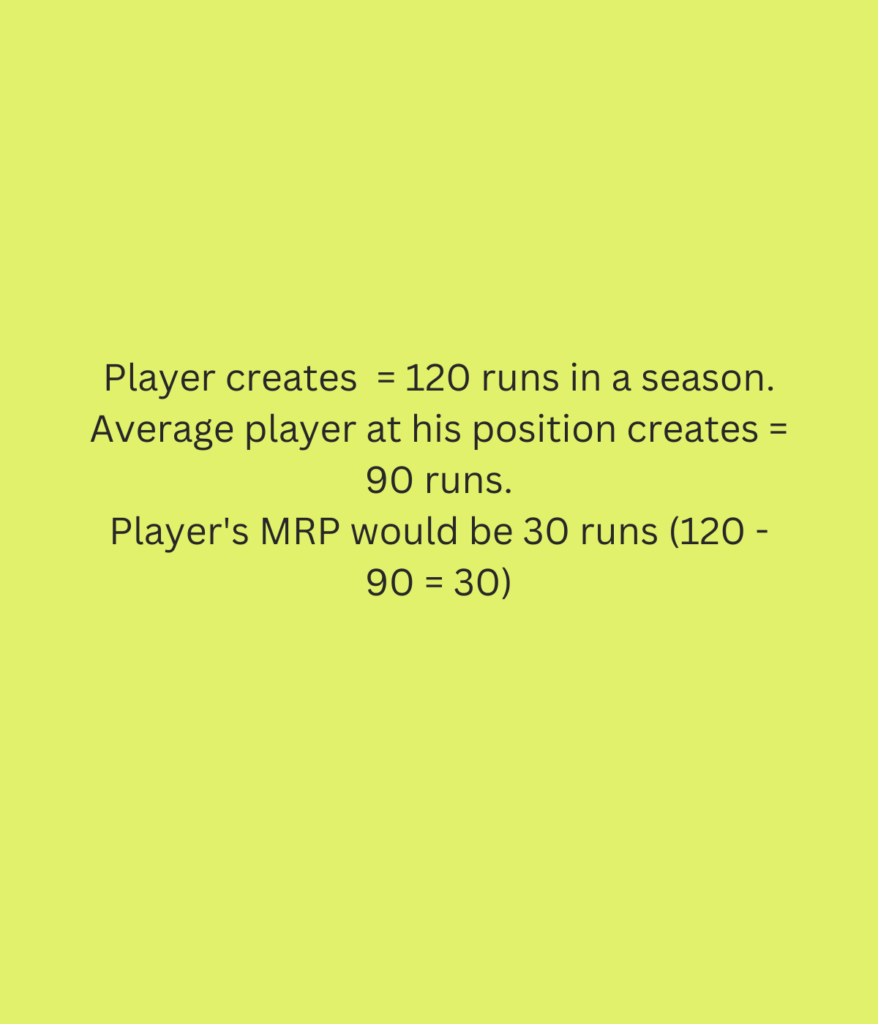Unlocking the Mystery: What Does MRP Mean in Baseball?

Over the course of the last century, baseball has established itself as one of the most popular sports in the United States. Over the years, various statistical measures have been developed to evaluate the performance of individual players and teams. One of these measures is known as MRP or Marginal Run Production. In this article, we will discuss What does mrp mean in baseball, as well as how it is calculated and the significance of this statistic.
Contents
- 1 What is MRP in Baseball?
- 2 How is MRP Calculated in Baseball?
- 3 Why is MRP Important in Baseball?
- 4 Limitations of MRP in Baseball
- 5 LRP vs. MRP: Understanding the Difference
- 6 Disadvantages of Poor MRP in Baseball
- 7 MRP and its Relationship with an ERA in Baseball
- 8 FAQs on What does mrp mean in Baseball
- 9 Conclusion
- 10 Trending Now
What is MRP in Baseball?
MRP, or Marginal Run Production, is a statistical measure that evaluates a player’s offensive contribution to a team in terms of the number of runs he creates above what an average player at his position would produce. MRP is calculated by taking the difference between the number of runs a player creates and the number of runs an average player at his position would create. The resulting figure is the player’s MRP.
How is MRP Calculated in Baseball?
Calculating MRP in baseball involves a few steps. To begin, we need to determine how many runs each player contributes to the total. This can be done using a variety of statistics, including batting average, on-base percentage, slugging percentage, and stolen bases. Once we have this figure, we need to calculate the number of runs an average player at that position would create. This is done by taking the average of all the players who played that position in a given season and calculating their total runs created.
Once we have both of these figures, we subtract the number of runs an average player would create from the number of runs the player in question actually created. The result is the player’s MRP. For example, if a player creates 120 runs in a season, and an average player in his position creates 90 runs, the player’s MRP would be 30 runs (120 – 90 = 30).

Why is MRP Important in Baseball?
MRP is an important statistic in baseball because it allows us to evaluate a player’s offensive contribution in a way that takes into account the position he plays. This is important because different positions have different offensive expectations. For example, a shortstop who hits 20 home runs in a season is more valuable than a first baseman who hits the same number of home runs because shortstops are expected to have lower offensive output than first basemen. By using MRP, we can compare players across different positions and determine which players are most valuable to their team.
Another important aspect of MRP is that it allows us to evaluate a player’s contribution in terms of wins. The reason for this is that the increased likelihood of a player’s team winning a game is directly proportional to the number of runs that player scores. By knowing a player’s MRP, we can estimate how many additional wins he is worth to his team compared to an average player in his position. Teams may use this information to guide their selections regarding which players to sign as free agents or acquire via trades.
Limitations of MRP in Baseball
While MRP is a useful statistic, it does have some limitations. The fact that it does not take a player’s defensive impact into consideration is one of the most significant shortcomings. This means that players who are exceptional defensively but have lower offensive output may be undervalued by the MRP statistic. Additionally, MRP does not take into account a player’s contributions to team chemistry, leadership, or other intangible factors that can contribute to a team’s success.

LRP vs. MRP: Understanding the Difference
In the realm of baseball, the terms LRP (Long Relief Pitcher) and MRP (Middle Relief Pitcher) are frequently used to categorize different types of relief pitchers. The distinction between the two lies in their respective roles and the situations in which they are typically deployed during a game.
- Long Relief Pitcher (LRP): A long relief pitcher is a player whose primary role is to pitch in extended periods of the game, usually after the starting pitcher has been removed early or when extra innings are anticipated. LRP’s are generally expected to provide multiple innings of solid pitching, helping to preserve the bullpen’s arms and provide stability in longer games.
- Middle Relief Pitcher (MRP): On the other hand, a middle relief pitcher is typically called upon to bridge the gap between the starting pitcher and the setup man or closer. MRP’s are often tasked with pitching one to three innings, depending on the specific game situation, and are crucial in maintaining a team’s lead or keeping the score close until the later innings.
Disadvantages of Poor MRP in Baseball
Effective middle-relief pitching plays a vital role in a team’s success. When a team lacks quality MRP options or employs poor MRP strategies, several disadvantages may arise:
- Fatigue and Overuse: If a team heavily relies on a small group of MRP’s without providing them adequate rest or relying on them in high-pressure situations too frequently, fatigue can set in. Overworked MRP’s may experience declining performance, decreased velocity, and increased risk of injuries. This can lead to ineffective relief pitching and a weakened bullpen overall.
- Erosion of Lead: When a poor MRP enters the game and struggles to retire batters or consistently throws strikes, it can result in a substantial erosion of a team’s lead. The inability to hold onto a lead can demoralize the team and negatively impact its chances of securing a victory.
- Increased Stress on Starters: A weak MRP corps can stress starting pitchers more. If the starting pitcher is aware that the bullpen might not provide reliable relief, they may feel pressured to pitch longer into games, risking fatigue or potential injury. This can disrupt the team’s overall pitching strategy and lead to suboptimal performance.
MRP and its Relationship with an ERA in Baseball
ERA (Earned Run Average) is a fundamental statistic used to evaluate pitchers’ effectiveness in preventing runs. While ERA primarily reflects the performance of starting pitchers, MRP’s can also significantly impact this metric.
- Inheriting Base Runners: One factor that can influence an MRP’s ERA is the situation they inherit when entering the game. If they are called upon with runners on base, their performance in preventing those runners from scoring directly affects their ERA. Allowing inherited runners to score can inflate an MRP’s ERA, even if they pitch effectively afterward.
- Impact on Team’s ERA: The collective performance of a team’s MRPs can also affect the team’s overall ERA. Suppose a team possesses a strong group of MRPs who consistently pitch well and prevent runs. In that case, it can lower the team’s ERA, even if the starting pitchers are not performing exceptionally.
- ERA as an Evaluation Metric: While ERA is a useful statistic, it should be considered alongside other metrics to evaluate an MRP’s performance comprehensively. Factors such as inherited runners, situational pitching, and overall effectiveness in high-leverage situations can provide a more nuanced understanding of an MRP’s contribution to a team’s success.
FAQs on What does mrp mean in Baseball
What does MRP stand for in baseball?
MRP stands for Marginal Run Production, which is a statistical measure used to evaluate a player’s offensive contribution to a team in terms of the number of runs he creates above what an average player at his position would produce.
How is MRP calculated in baseball?
To calculate MRP, we need to first calculate the number of runs a player creates using a variety of offensive statistics. After that, we determine the number of runs that would be produced by an average player playing that position. The player’s Minimum Retail Price (MRP) is the difference between these two amounts.
Why is MRP important in baseball?
MRP is important because it allows us to compare players across different positions and determine which players are most valuable to their team. It also allows us to estimate a player’s contribution in terms of wins, which can be used by teams to make decisions about which players to sign or trade for.
What are the limitations of MRP in baseball?
The biggest limitation of MRP is that it only takes into account a player’s offensive contribution and does not consider defensive or intangible factors. Additionally, the calculation of MRP relies on various assumptions about what an average player at a given position would produce.
Can MRP be used to evaluate teams as a whole?
Yes, MRP can be used to evaluate teams as a whole by calculating the MRP for each player on the team and determining the team’s overall offensive production relative to the league average. This information may be helpful in determining areas of the team’s offensive output in which the club may need to make improvements.
Conclusion
MRP is a useful statistic in baseball that allows us to evaluate a player’s offensive contribution in a way that takes into account the position he plays. By using MRP, we can compare players across different positions and determine which players are most valuable to their team. MRP also gives us the ability to estimate a player’s contribution in terms of wins, which is useful information for clubs to have when deciding which players to acquire or trade for. While MRP does have limitations, it is still a valuable tool in evaluating a player’s overall contribution to a team. It is essential, when dealing with any statistical measure, to take into account the context in which the measure is being used and to avoid placing an excessive amount of trust in any one metric.
In addition to its use in evaluating individual players, MRP can also be used to evaluate teams as a whole. By calculating the MRP for each player on a team, we can determine the team’s overall offensive production relative to the league average. Teams may use this information to determine areas in which they may need to boost their offensive output so that they can achieve their goals.
Overall, MRP is a valuable tool for evaluating offensive production in baseball. While it does have limitations, it provides a useful way to compare players across different positions and estimate their value in terms of wins. As baseball continues to evolve, we can expect new statistical measures to emerge that will help us better understand and evaluate the game.










